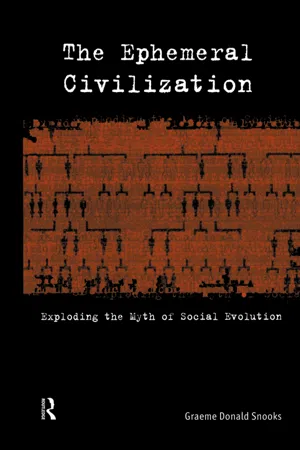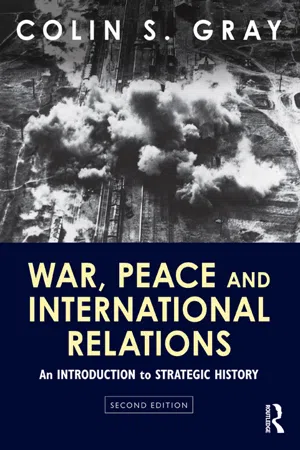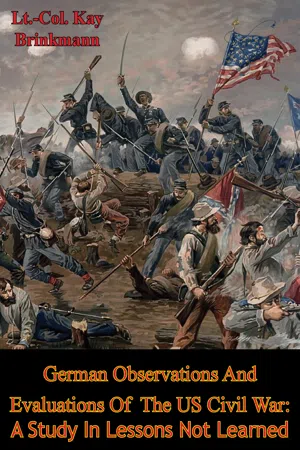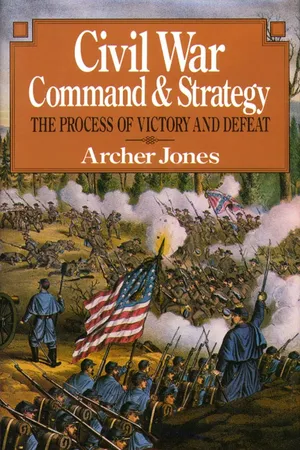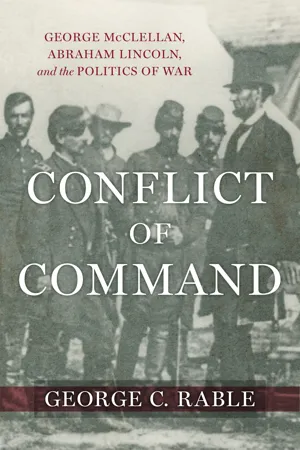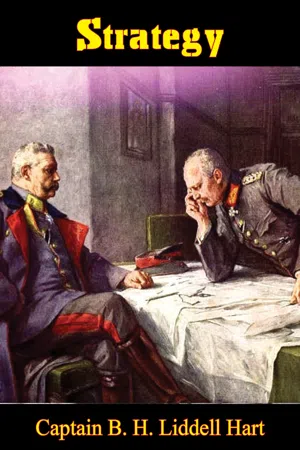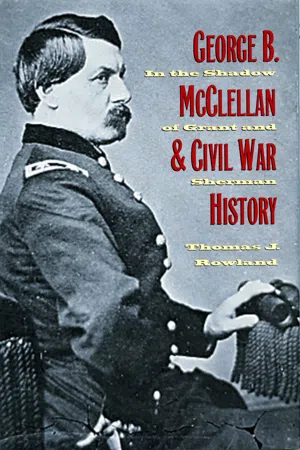History
Northern Strategies in the Civil War
The Northern strategies in the Civil War focused on leveraging their industrial and population advantages to defeat the Confederacy. These strategies included blockading Southern ports, capturing key Confederate territories, and ultimately, the Anaconda Plan, which aimed to suffocate the South by cutting off its resources. The North also utilized its superior infrastructure and transportation networks to support its military campaigns.
Written by Perlego with AI-assistance
Related key terms
Related key terms
1 of 4
Related key terms
1 of 3
7 Key excerpts on "Northern Strategies in the Civil War"
- eBook - ePub
The Ephemeral Civilization
Exploding the Myth of Social Evolution
- Graeme Snooks(Author)
- 2002(Publication Date)
- Routledge(Publisher)
The reason the North went to war against the South was not to free the slaves, but to prevent the fragmentation of the North American market by the creation of a new nation, the Confederacy, in the South. By breaking away from the Union, the South might provide an example, together with financial and military support, for the central territories and for the Far West to do the same. Like the South these new nations could have pursued a dependent strategy by developing staples, such as wool, wheat, meat, and minerals, that could be exported to Europe. If the USA was transformed into a multitude of nation-states as in Europe, the technological strategy of the North would collapse. To prevent this the North was prepared to pay whatever it might cost.And the cost was high. In four years of bitter warfare much infrastructure together with the lives of more than 600,000 men were destroyed (Engerman 1966). This amounted to the staggering proportion of about one-quarter of young men eligible for military service. Had the war been fought over any issue other than control of the dynamic strategy of North America these high costs would have quickly led to a negotiated peace. Following its expensive victory, the North imposed its dynamic strategy on the South – with the dramatic consequences feared by the seceding states – and attained its vision of a mega-state in North America. No one would ever challenge the technological strategists again. And, just as the Northern strategists had hoped, there were immense riches to be garnered. This can be seen reflected in the great mansions they built in New York over the following generation (Hughes 1997). The Civil War had achieved its objectives.While the American Civil War can be explained by my dynamic-strategy model, it provides a stumbling block for other mega-theories. It is, therefore, a litmus test for dynamic models of human society. How, one might ask, would Marx explain it? It is quite clear that the Civil War was not a struggle between classes – both societies were dominated by prosperous elites who invested in ‘capitalist’ enterprises – but, rather, a struggle between supporters of different dynamic strategies. Nor was it a struggle between the forces of good and evil as implied by those, like Robert Fogel, who argue that it was a conflict over the moral issue of slavery. Robert Fogel (1989), joint Nobel Laureate with Douglass North, is the best-known exponent of the popular argument that the Civil War was fought over the ‘moral’ issue of slavery. His recent discussion of this issue is surprising because, in contrast to his earlier work (Fogel and Engerman 1974), he employs an ethical rather than an economic argument. This approach, which in my opinion leads him into error, is the outcome of not employing a dynamic framework for his static neoclassical approach to slavery. Moral arguments are employed to fill the void left by deficiencies in the neoclassical approach to history. - eBook - ePub
War, Peace and International Relations
An introduction to strategic history
- Colin S. Gray(Author)
- 2013(Publication Date)
- Routledge(Publisher)
Societies as well as states wage war. Despite the persuasiveness of a large historical scholarship that attributes Confederate defeat to the many weaknesses in Southern society, in fact both societies, North and South, stayed the military course to the bitter end. There was much evidence of war weariness and demoralization. How could there not be? But the war ended only when Lee was in a position where his Army of Northern Virginia could not fight on. Both he and enough of his men were willing, but literally unable, to continue the by-then plainly hopeless struggle. A great deal that has been written about the lack of a strong enough sense of Southern nationhood is definitively contradicted by the facts of the ferocity of the fighting and its continuation for four years. Southern soldiers believed for years that they were better men in most senses than were their Northern counterparts. One needs to be careful in handling cultural argument that can slide into a somewhat metaphysical and dubious culturalism (Porter, 2009), but there is some basis in believing that the Southern soldier, ‘Johnny Reb’, was more of a warrior than was his Northern foe, ‘Billy Yank’. Much more to the point is the apparent fact that both Reb and Yank believed this to be so, certainly until quite late in the war. On a less happy note for the South, its society bred an independence of spirit, a lack of discipline and even an inclination to idleness that were not conducive to good order in an army. Lee and other Confederate generals had a command and control problem with military discipline that was far more serious for them than it was for their Federal opponents.In an important sense the victory of the Union was a distinctly strategic one (Stoker, 2010). Bluntly stated, the North eventually discovered what it needed to achieve in order to win, and then proceeded to design and execute a strategy worthy of the name to secure victory; and the Confederacy did not. Both sides began the war with the Napoleonic paradigm of decisive battle as the goal. And not decisive battle per se, but a single such encounter that should decide the war's outcome. The South discovered that while it could and did win battles, those victories did not suffice to decide the war's outcome. Moreover, the quest for such decision was disproportionately debilitating to the South, because it was always on the wrong side of an assets imbalance.The Union Army proved able to absorb a great deal of damage. Political commitment to the Union cause, as well as the more generic fuels of military cohesion and combat motivation, was sufficiently robust to withstand the hard military knocks that Lee and his better lieutenants (notably the iconic Confederate tactician Thomas ‘Stonewall’ Jackson) inflicted on the North in 1862 and early 1863 in particular. Belligerents in all wars have to try to find a way to win. The all-important strategy function commands war-makers to orchestrate and execute the eternal triptych of ends, ways and means. The American Civil War was a war of principle, belief, even ideology. This meant that a compromise peace was never likely. The issue was union or disunion, two plain alternatives. Moreover, unfortunately, no clever short cuts to victory were available to either side. Single-battle, even single-campaign, victories did not produce sufficient military victory to translate readily into political victory in the war. There was a notable asymmetry in the war aims of the belligerents. The South simply wished to be left alone with its newly proclaimed statehood. It had to persuade the Union to let it leave in peace. It physically could not, and politically had no need to, defeat the North in a conclusive military fashion. Washington had to be encouraged to believe that the cost of the effort to return the Confederate States to the Federal fold was unsustainable. But, for its part, the North discovered that it would not suffice only to hurt the South on the field of battle, or by imposing some potentially serious hardship on Southern society. Instead, it was unmistakably clear by 1864 that the South (meaning, primarily, its premier-by-far military force, Lee's Army of Northern Virginia) would have to be conclusively defeated militarily. In order to do that, the whole of the fabric and assets of the South would need to be severely damaged. The total war waged by Sherman in his iconic march through Georgia (and then the Carolinas in 1864–5) fortunately fell some way short of the historical standard for awfulness that would be set, say, by the Wehrmacht in Russia in 1941–4, but it was still an early marker on that grim historical road. - Lt.-Col. Kay Brinkmann(Author)
- 2015(Publication Date)
- Golden Springs Publishing(Publisher)
CHAPTER 6 — ESSENTIAL LESSONS FROM THE CIVIL WAR
The U.S. Civil War may at its core have been a gigantic war among brothers aiming at reconstituting the Union; it nevertheless was the classic struggle of two antagonistic wills wrestling for victory, generating generally applicable military lessons. After having evaluated the assessments of the German observers, this chapter analyzes essential lessons the Civil War and relates them to the developments in contemporary Germany up to the First World War.Lessons at the Strategic Level
The Significance of Political-Military Relations
The ultimate success of the Union was based extensively on the recognition that political and military objectives are closely interrelated and require continuous coordination through a dynamic process. President Abraham Lincoln became the synonym for enforcement of this principle. From the outset of the war he set the strategic imperatives, while simultaneously balancing the different domestic, foreign and socio-economic influences. Lincoln was aware of the close reciprocity between the national strategic objectives on one side and the operational aims, methods and situation within the theaters on the other side. Consequentially, political and military leadership agreed that the duration of the war would strongly influence the dimension of violence and suffering as well as the conditions for a peace settlement.{154} Lincoln’s active interference during the first three years of the war resulted from two reasons. First, promising military strategic concepts were not executed energetically and decisively enough (McClellan). Second, unsuccessful concentration of effort and lack of synchronization of the operations reflected a failed appreciation of the overall strategic situation and purpose (Halleck). In addition, the policy of appointing commanders oftentimes less on military competence rather than on the grounds of political influence and partisanship certainly resulted in extensive friction that affected the conduct of military operations.{155} Despite his own lack of military experience, Lincoln early became aware of the significance of synchronized military operations in time and space.{156}- eBook - ePub
Civil War Command And Strategy
The Process Of Victory And Defeat
- Jones Archer(Author)
- 2010(Publication Date)
- Free Press(Publisher)
CHAPTER 11THE STRATEGIC FRAMEWORK
Classifying strategy makes it and the Civil War’s strategy easier to understand. Combat and logistic strategy offer the two basic means of depleting the enemy forces, either directly through combat or indirectly by depriving them of needed resources. Of course, implementing a logistic strategy usually involves combat, but this combat is a means to the end of conquering territory or otherwise undermining the adversary’s supply base.The other classification divides strategy according to its operational approach, the hit and run strategy of raiding or the persisting strategy’s goal of seizing territory. The Napoleonic operational strategy of concentration and turning movements belongs primarily to persisting strategy. Political strategy, which uses military means to accomplish political objectives directly, does not fit into these classifications of military strategy, but its military actions do.But these two pairs of classifications do apply equally well to naval warfare and help illuminate the essential unity of strategy. Early in the war the navy, with totally inadequate forces, sought to blockade southern ports. By attempting to control the water outside the ports, the navy applied a persisting strategy in pursuit of its logistic strategy of destroying the Confederacy’s foreign trade and cutting off its critical imports.The war brought phenomenal expansion to the U.S. fleet, which, in four years, increased from 90 to 670 ships and from 7,500 sailors to 51,500. Beginning with 1,300 officers, of whom 322 joined the Confederacy, the U.S. Navy’s officers numbered 6,700 at the war’s end. Much of the credit for this increase belongs to Gideon Welles, the able, energetic, and eccentric secretary of the navy. A journalist and politician who covered his bald head with a wig, he had served for three years as chief of a navy department bureau concerned with supply. This background helped the gifted secretary give perceptive direction to the navy’s contribution to waging the war. The navy diverted some ships to pursue Confederate commerce raiders and some to render crucial aid to the army by controlling the inland rivers, but concentrated most of its resources on blockading Confederate ports. This fit Scott’s anaconda strategy and constituted the contribution which a superior fleet could make to the war effort. - eBook - ePub
Conflict of Command
George McClellan, Abraham Lincoln, and the Politics of War
- George C. Rable, T. Michael Parrish(Authors)
- 2023(Publication Date)
- LSU Press(Publisher)
3 STRATEGY AND POLITICSOn August 2, 1861—less than two weeks after being summoned to Washington—George B. McClellan presented to Abraham Lincoln a memorandum laying out not only a military strategy but also his thoughts on the nature of the war. Here, not for the first and certainly not for the last time, McClellan offered a combination of military and political recommendations, but of course the two cannot be so neatly separated (as the Prussian theorist Clausewitz and many others have observed).1 During the American Civil War, distinctions between military and political advice were often ignored.“In this contest it has become necessary to crush a population sufficiently numerous, intelligent, and warlike to constitute a nation,” McClellan began. Terming the Rebels a “nation” may have alarmed Lincoln, but the general was simply acknowledging the fact that the United States faced more than a limited insurgency. Therefore, the task at hand was formidable: “We have not only to defeat their armed and organized forces in the field, but to display such an overwhelming strength as will convince all our antagonists, especially those of the governing, aristocratic class, of the utter impossibility of resistance.” McClellan feared that the recent defeat at Bull Run “will enable the political leaders of the Rebels to convince the mass of their people that we are inferior to them in force and courage.” The proper response was “overwhelming physical force” and a “rigidly protective policy” toward property and persons.Virginia would likely become the main battleground, though McClellan also proposed movements in the West and along the Mississippi River. For what he called the “main Army of Operations,” McClellan proposed raising a force of 273,000 men, which in cooperation with the navy would attack various points along the southern coastline—not only driving the Confederates out of Virginia but also eventually capturing Charleston, Savannah, Montgomery, Pensacola, Mobile, and New Orleans. Combined with offensives in the West, McClellan’s great army would bring overwhelming pressure to bear on the Rebels. The object was to end the war in “the shortest possible time” by “crush[ing] the rebellion at one blow, terminate the war in one campaign.”2 - eBook - ePub
- Captain B. H. Liddell Hart(Author)
- 2016(Publication Date)
- Tannenberg Publishing(Publisher)
In studying the depressing evidence of the Crimea we cannot overlook, although we should not exaggerate, the fact that in the forty years which had elapsed since Waterloo the armies of Europe had become more strictly professionalized. Its significance is not as an argument against professional armies, but as an illustration of the latent dangers of a professional environment. These dangers are inevitably accentuated on the higher levels, and with length of service, unless counteracted by revivifying touch with the outer world of affairs and thought. On the other hand, the early stages of the American Civil War were to reveal the weaknesses of an unprofessional army. Training is essential to forge an effective instrument for the general to handle. A long war or a short peace afford the most favourable conditions for the production of such an instrument. But there is a defect in the system if the instrument is superior to the artist.In this, as in other aspects, the American Civil War of 1861-5 offers an illuminating contrast. The military leaders, especially in the South, were mainly drawn from those who had made arms their profession, but the pursuit of this profession had in many cases been varied with civil employment or leisure for individual study. The parade ground had not been either the breeding ground or the boundary of their strategical ideas. Nevertheless, despite a refreshing breadth of view and fertility of resource in what may be termed local strategy, the conventional aim at first ruled the major operations.The tendency was increased by the development of railways. These provided strategy with a new speed of movement, but without an accompanying flexibility the other essential constituent of true mobility. The American Civil War was the first war in which rail transportation played a major part, and by the fixed form of its own routes it naturally tended to make strategy run on strait and straight-forward lines.Moreover, in this and subsequent wars, armies came to depend on the railway for their maintenance without realizing how dependent they had become. Increased ease of supply encouraged the commanders to swell their numbers at the end of the railway line without asking themselves what effects such numbers would have on their power of action. The result of the new means of movement was, paradoxically, to reduce mobility rather than increase it. The railway fostered the expansion of armies it could forward more men, and feed them, than could fight effectively. It fostered their wants, and they became tied to the railhead. At the same time their sustenance ‘hung on a thread’ the long stretch of the rail line behind, which was very vulnerable. - eBook - ePub
George B. McClellan and Civil War History
In the Shadow of Grant and Sherman
- Thomas J. Rowland(Author)
- 2011(Publication Date)
- The Kent State University Press(Publisher)
5What is generally overlooked in the indictments listed above is any serious consideration of McClellan’s strategic thinking vis à vis Northern perceptions of the nature and causes of the secessionist rebellion and the political and national strategies designed to subdue it in its first year.6 With hindsight, McClellan came to see that “slavery was the real knot of the question and the underlying cause of the war.” His Civil War career had been anchored in the belief that that was precisely the question that had to be avoided, since it obscured and complicated the importance of saving the Union. He had written his friend and mentor Samuel Barlow in November 1861 to ask his assistance in dealing with the political aspects of the slavery issue. “Help me to dodge the nigger-we want nothing to do with him,” he pleaded. He believed that the issue of emancipation was entirely “incidental and subsidiary” to the matter of restoring the Union, and he was comforted by his perception that the “Presdt is perfectly honest & is really sound on the nigger question.” He remained steadfast, however, in his conviction that the conflict was started by the “violent course of a comparatively small number of men, on both sides of the line, during the thirty years preceding the war.” Despite his suspicion that northern abolitionists were most culpable for the rupture of the Union, he had unswervingly thrown aside all questions of responsibility once Fort Sumter was fired upon. “The Govt. is in danger, our flag is insulted,” he declared, “[and] we must stand by it.”7
Index pages curate the most relevant extracts from our library of academic textbooks. They’ve been created using an in-house natural language model (NLM), each adding context and meaning to key research topics.
Explore more topic indexes
Explore more topic indexes
1 of 6
Explore more topic indexes
1 of 4
